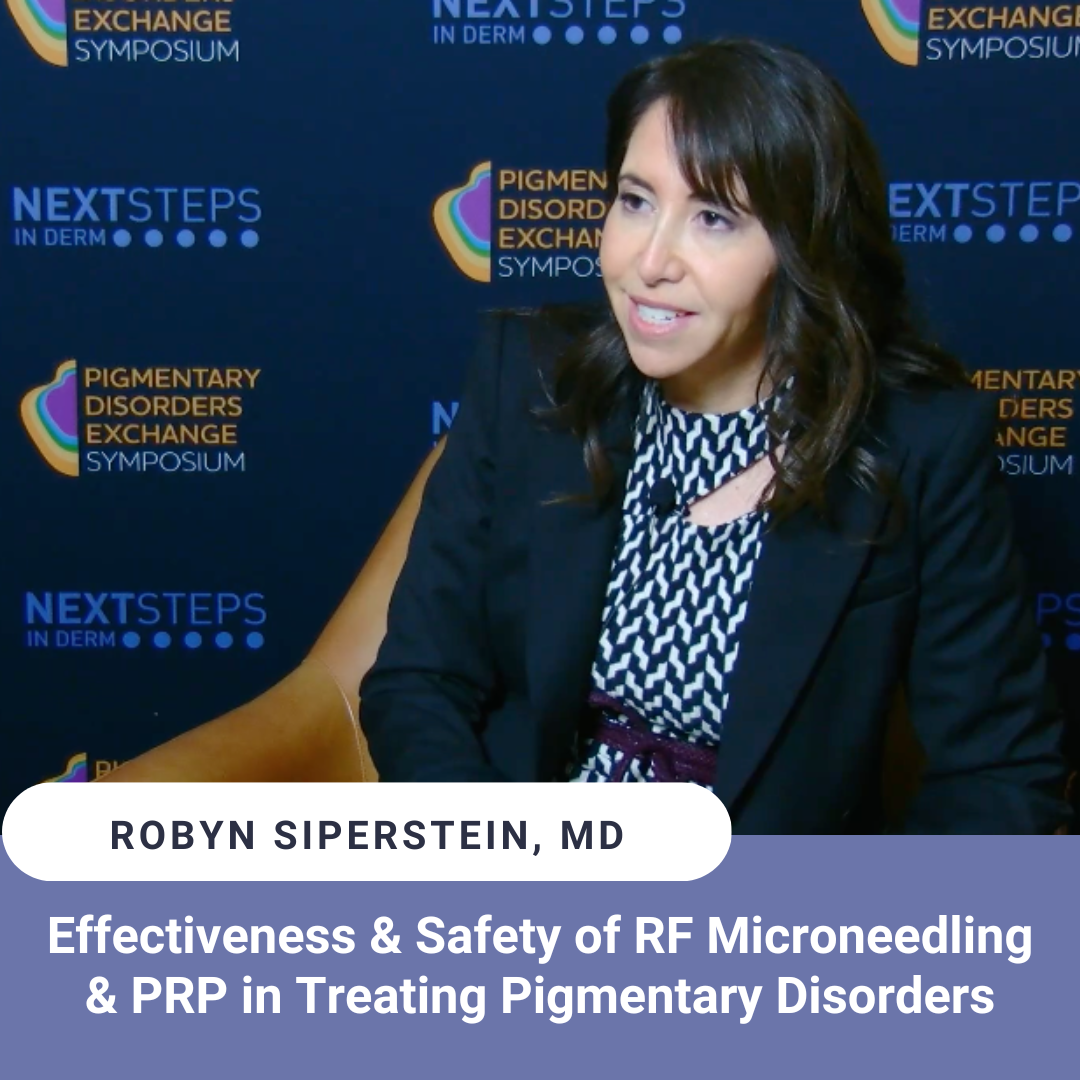Next Steps in Derm, in partnership with Pigmentary Disorders Exchange Symposium interviewed Dr. Robyn Siperstein, a dermatologist in Boca Raton and Boynton Beach, FL. Watch as Dr. Siperstein explains how modalities such as microneedling can both increase and decrease pigment. Listen as she shares tips on getting the desired pigmentary effect. Hear about her pilot studies on combination therapies that can potentially shorten treatment time and make treatment easier for patients. Plus she shares a compelling patient success story.
Further Reading
If you want to read more about radiofrequency microneedling and PRP for pigmentary disorders, check out the following articles published in the Journal of Drugs in Dermatology:
A Comparative Analysis of Electric and Radiofrequency Microneedling Devices on the Market
ABSTRACT
Microneedling was first described in 1995 by Orentreich and Orentreich for the treatment of atrophic scars and wrinkles. The local injury induced by dermal penetration of microneedling causes release of growth factors such as transforming growth factor (TGF)-α, TGF-β, and platelet-derived growth factor (PDGF). This stimulates collagen and elastin fiber production as well as capillary formation, ultimately leading to tissue remodeling.
Microneedling in All Skin Types: A Review
ABSTRACT
INTRODUCTION: Microneedling procedures are growing in popularity for a wide variety of skin conditions. This paper comprehensively reviews the medical literature regarding skin needling efficacy and safety in all skin types and in multiple dermatologic conditions.
METHODS: A PubMed literature search was conducted in all languages without restriction and bibliographies of relevant articles reviewed. Search terms included: microneedling, percutaneous collagen induction, needling, skin needling, and dermaroller.
RESULTS: Microneedling is most commonly used for acne scars and cosmetic rejuvenation, however, treatment benefit has also been seen in varicella scars, burn scars, keloids, acne, alopecia, and periorbital melanosis, and has improved flap and graft survival, and enhanced transdermal delivery of topical products. Side effects were mild and self-limited, with few reports of post-inflammatory hyperpigmentation, and isolated reports of tram tracking, facial allergic granuloma, and systemic hypersensitivity.
DISCUSS: Microneedling represents a safe, cost-effective, and efficacious treatment option for a variety of dermatologic conditions in all skin types. More double-blinded, randomized, controlled trials are required to make more definitive conclusions.
Did you enjoy this video interview? Find more here.

